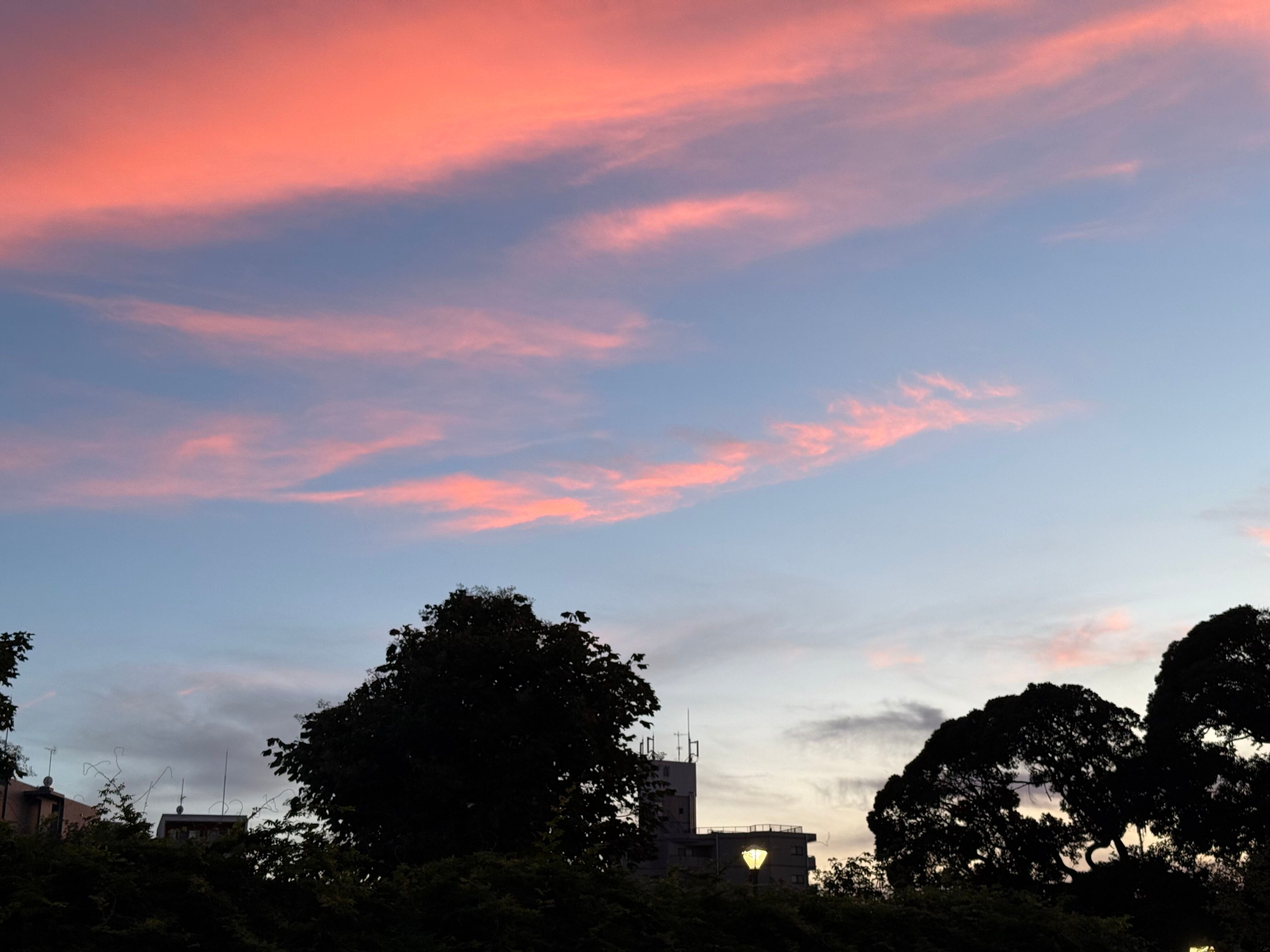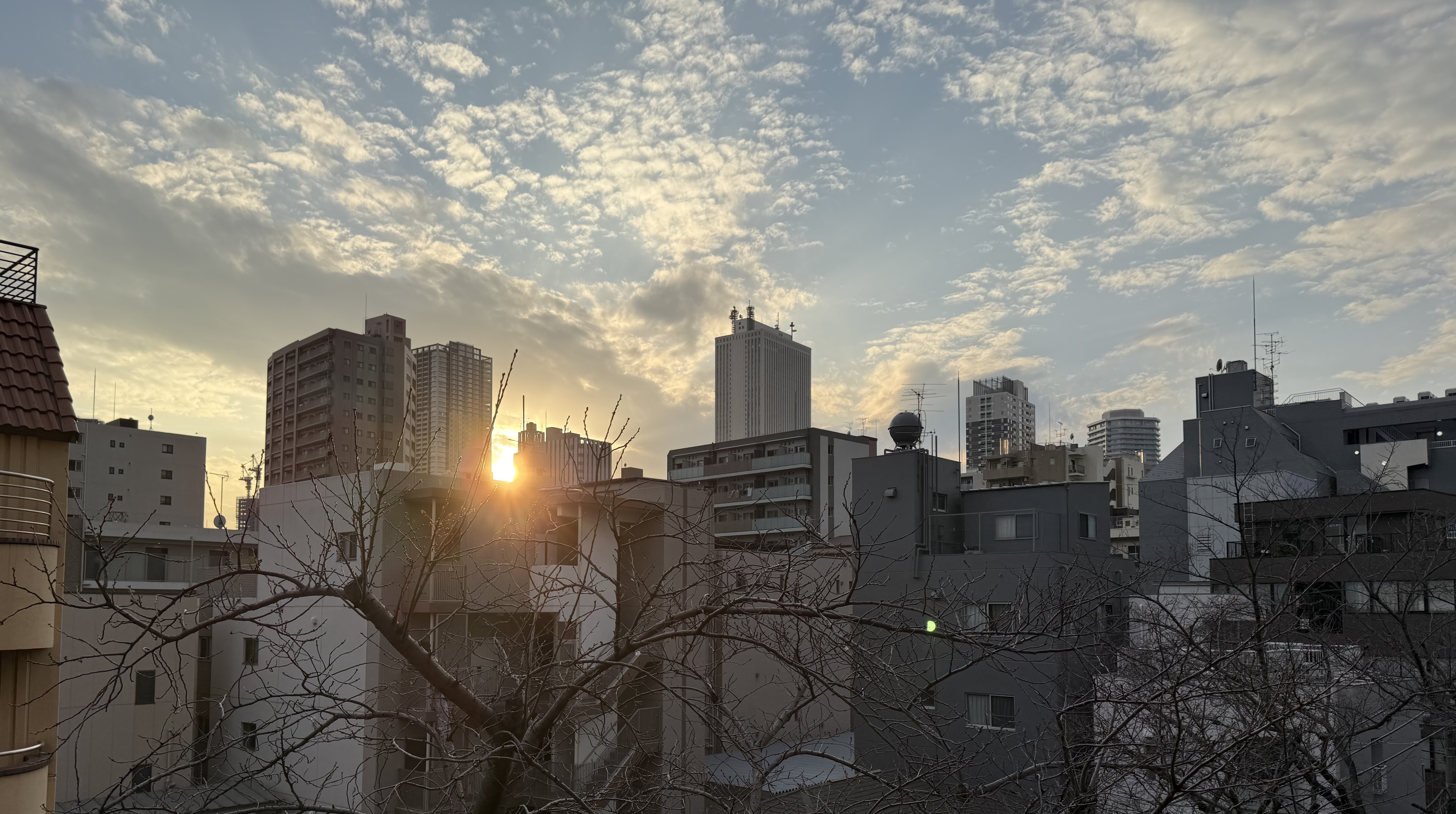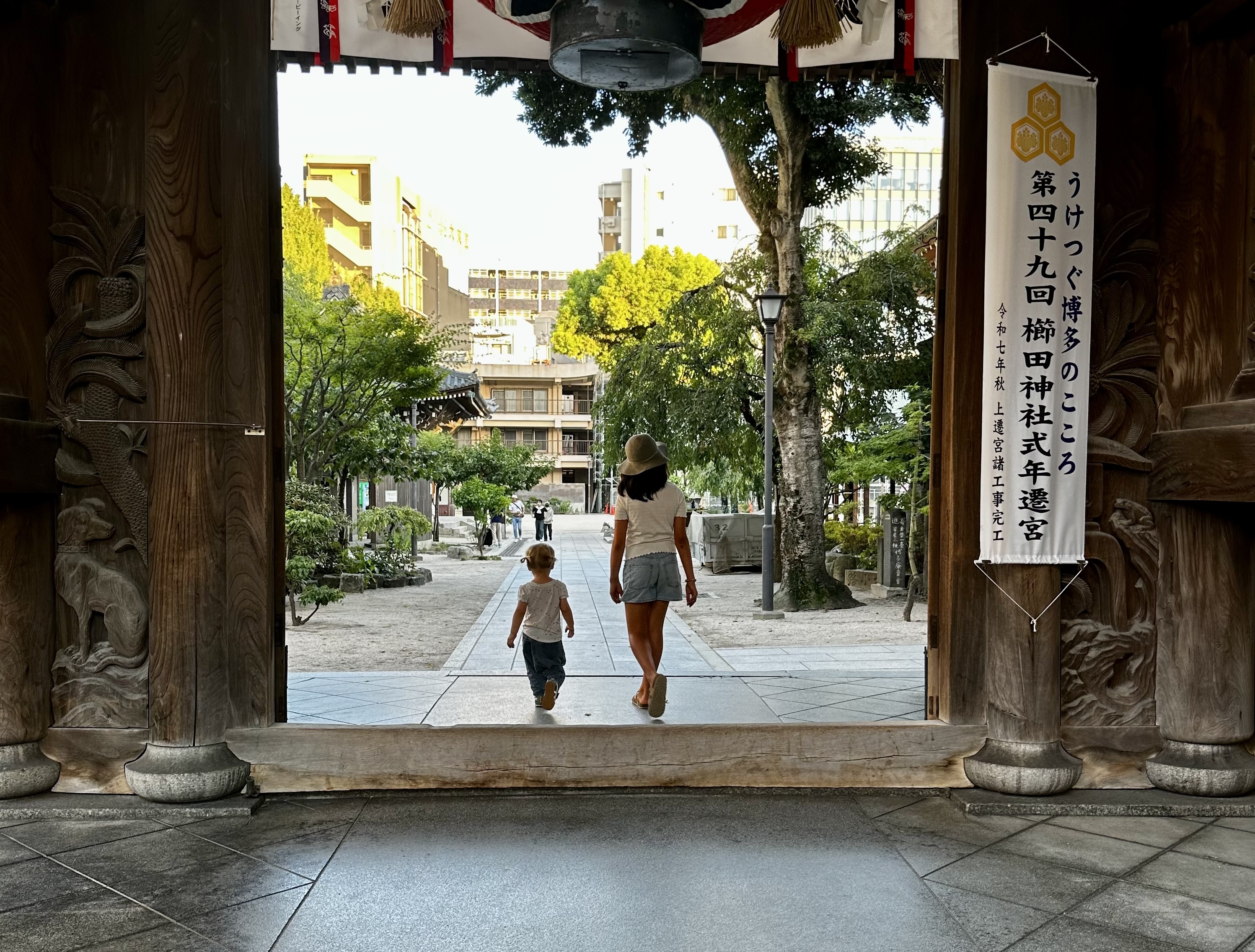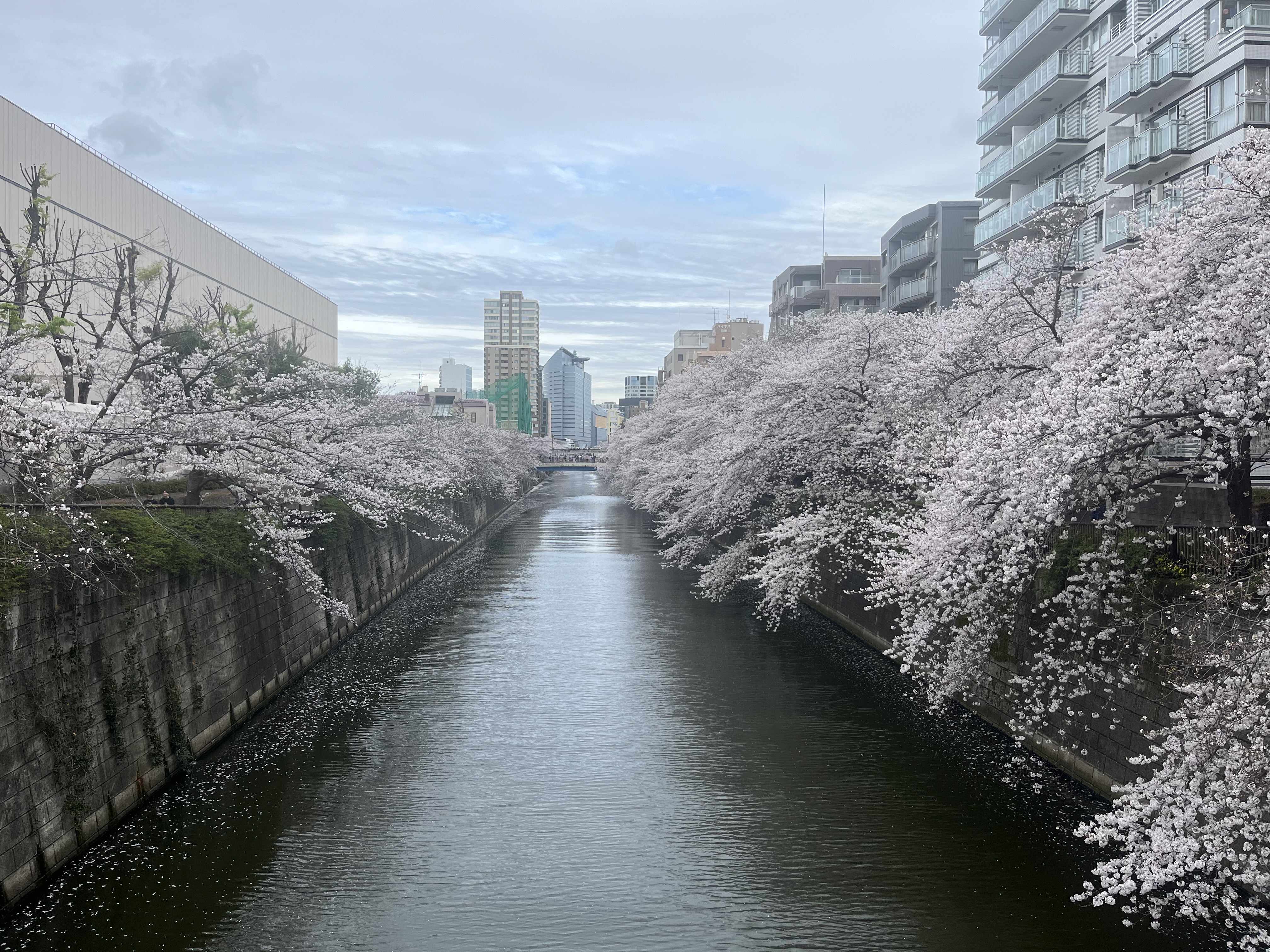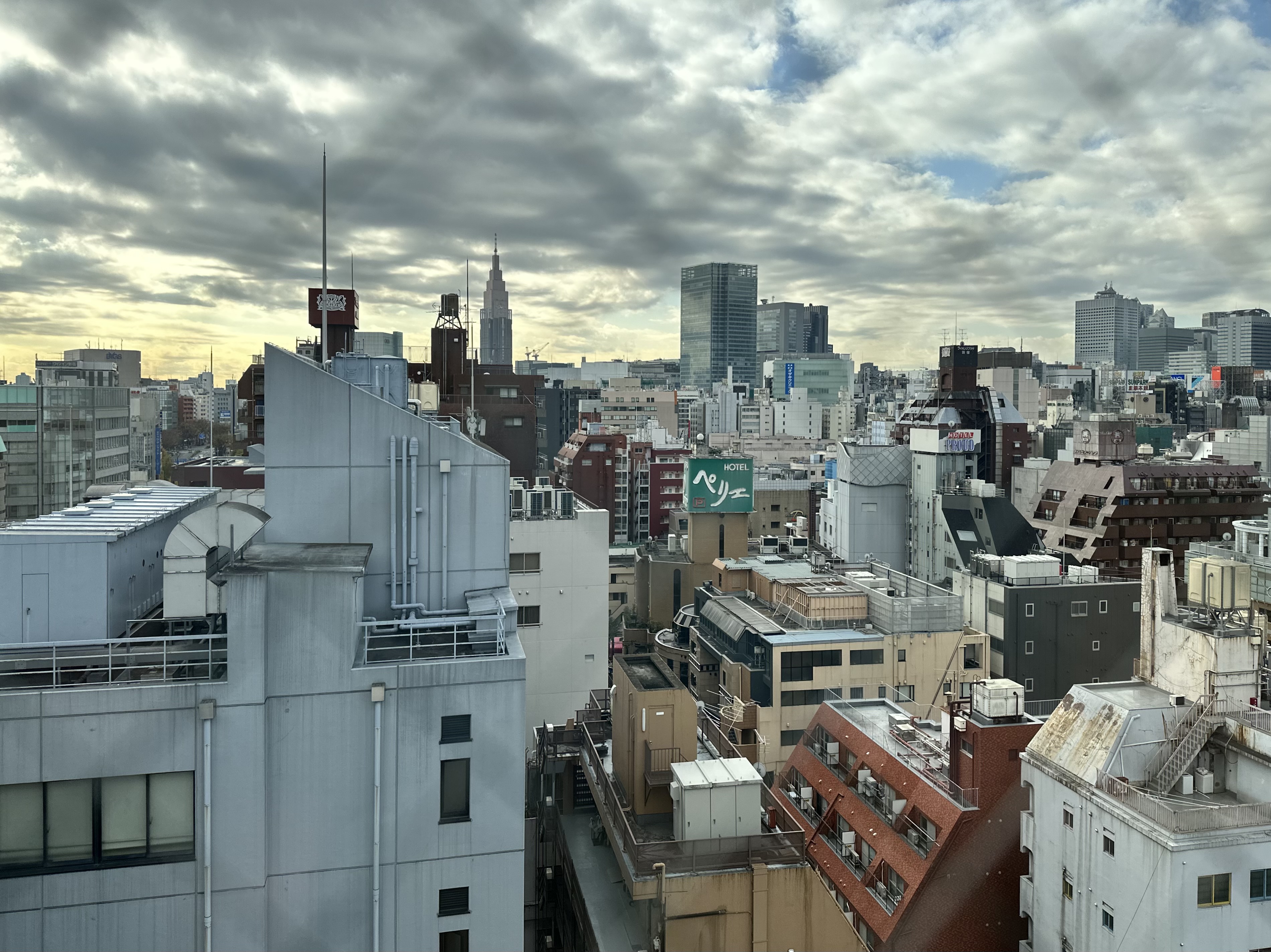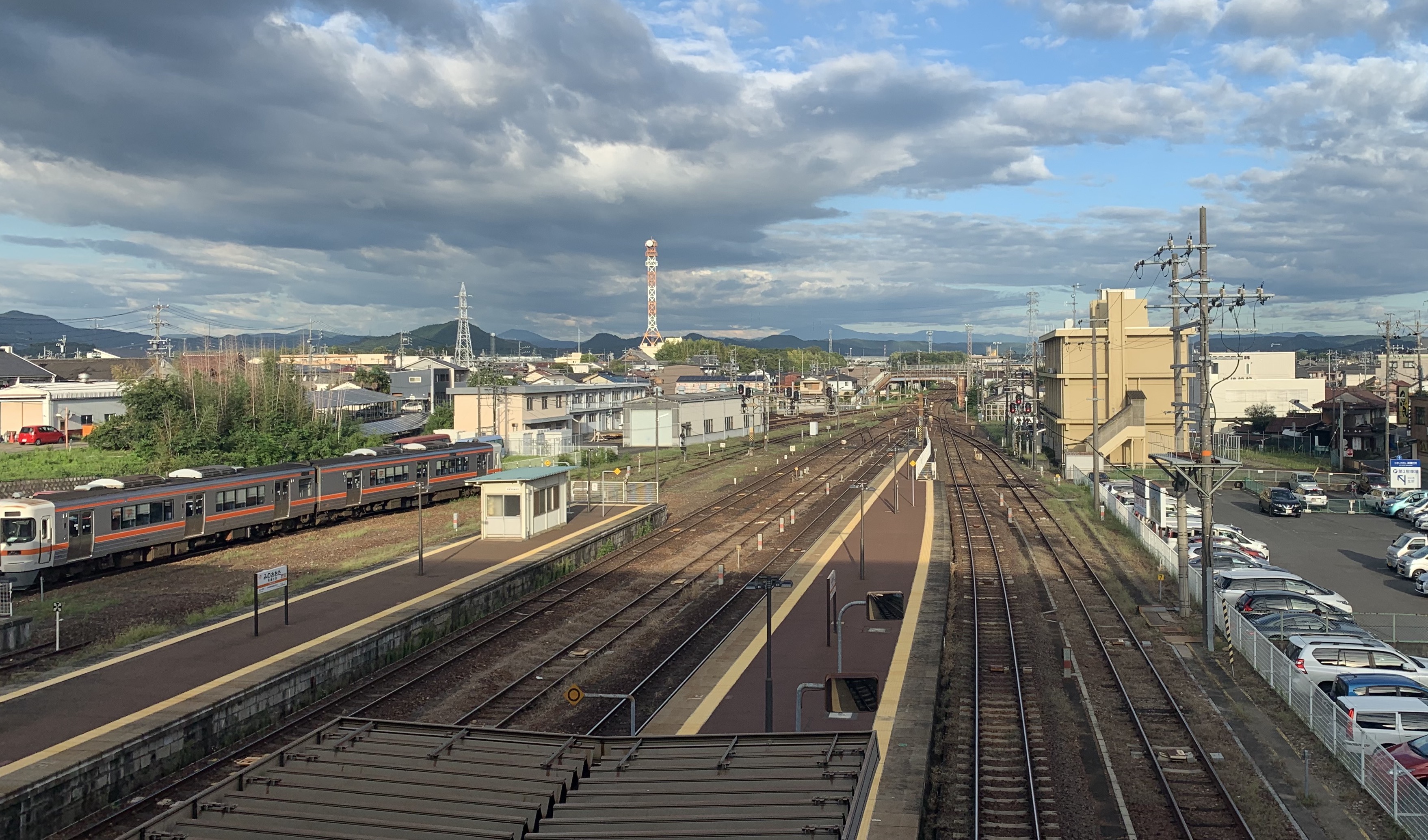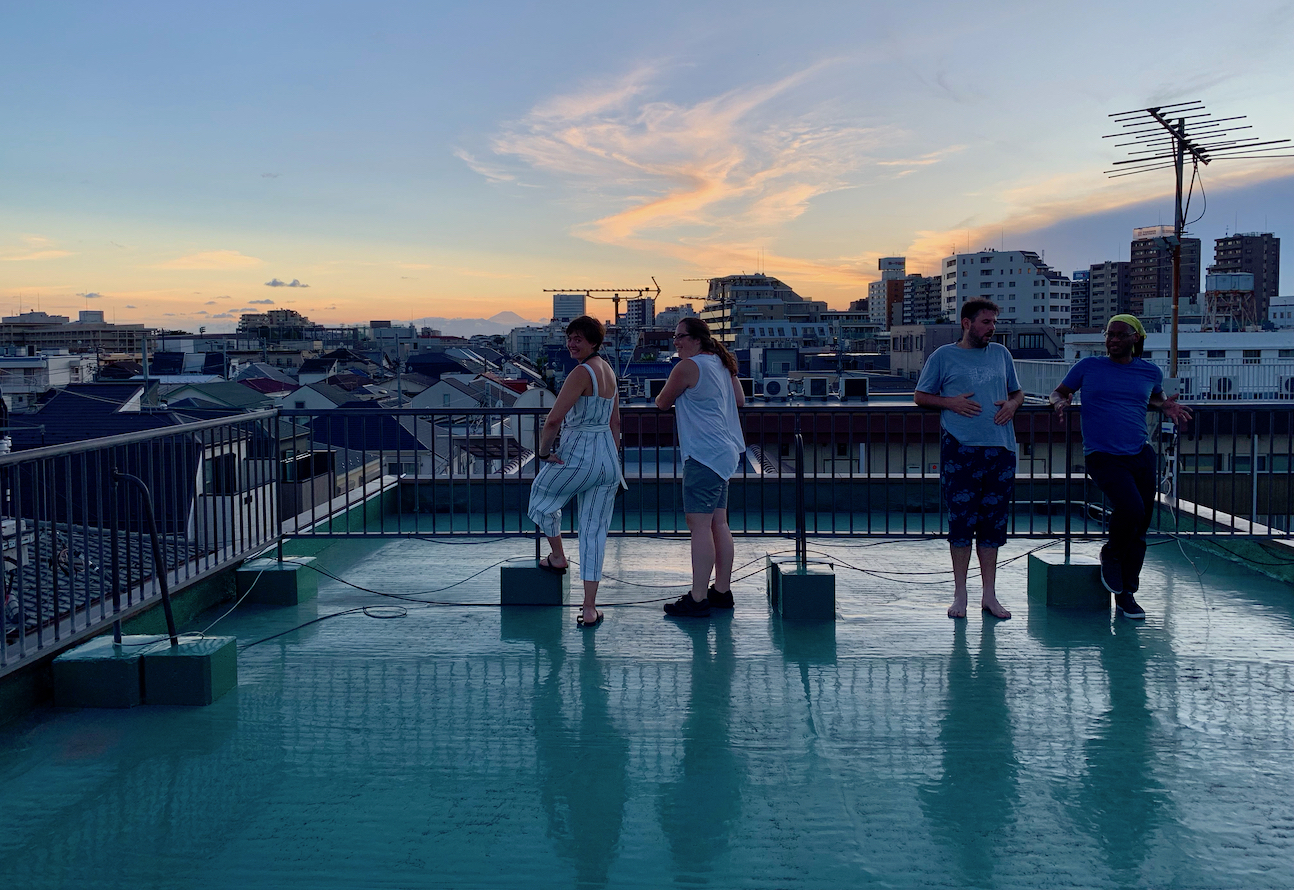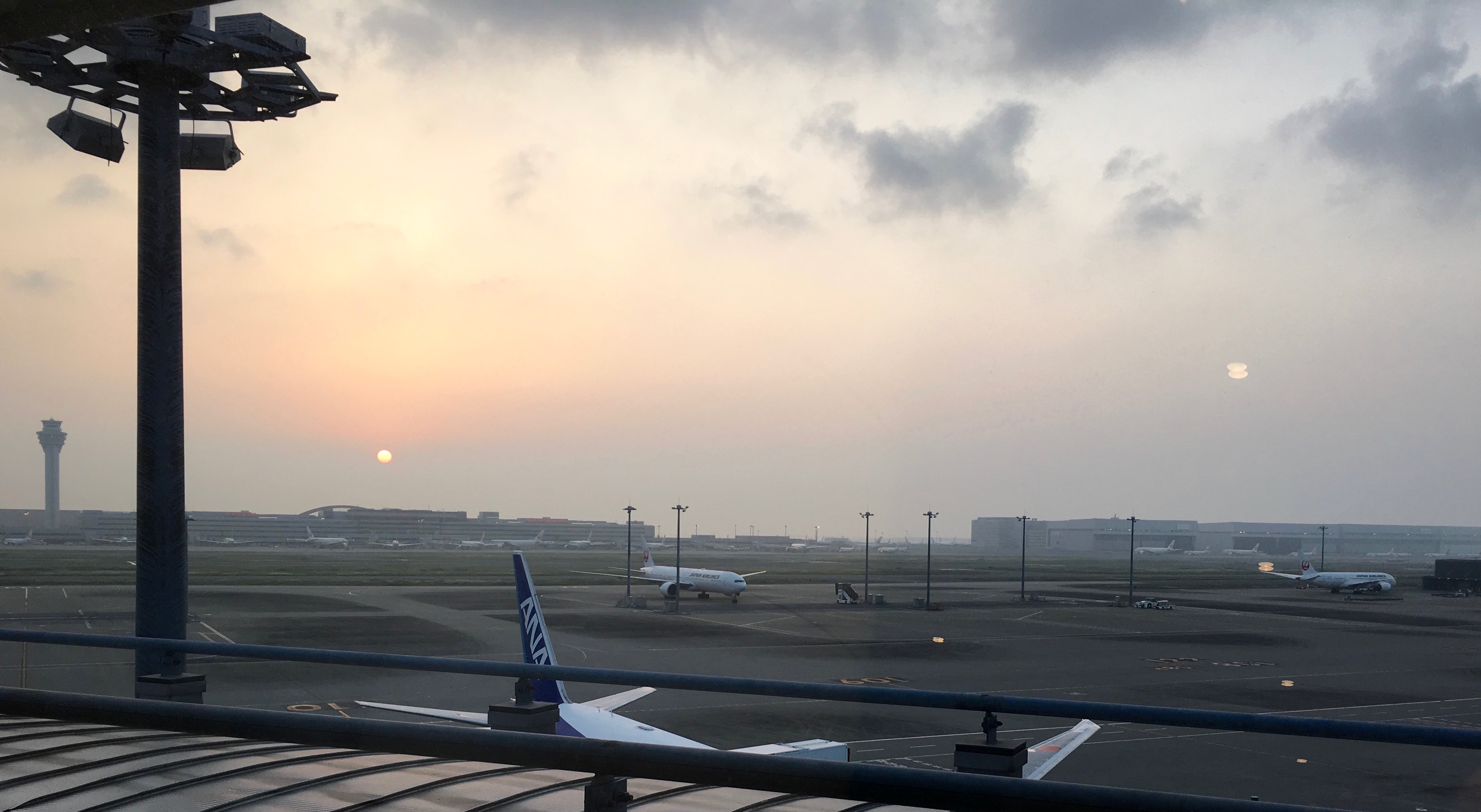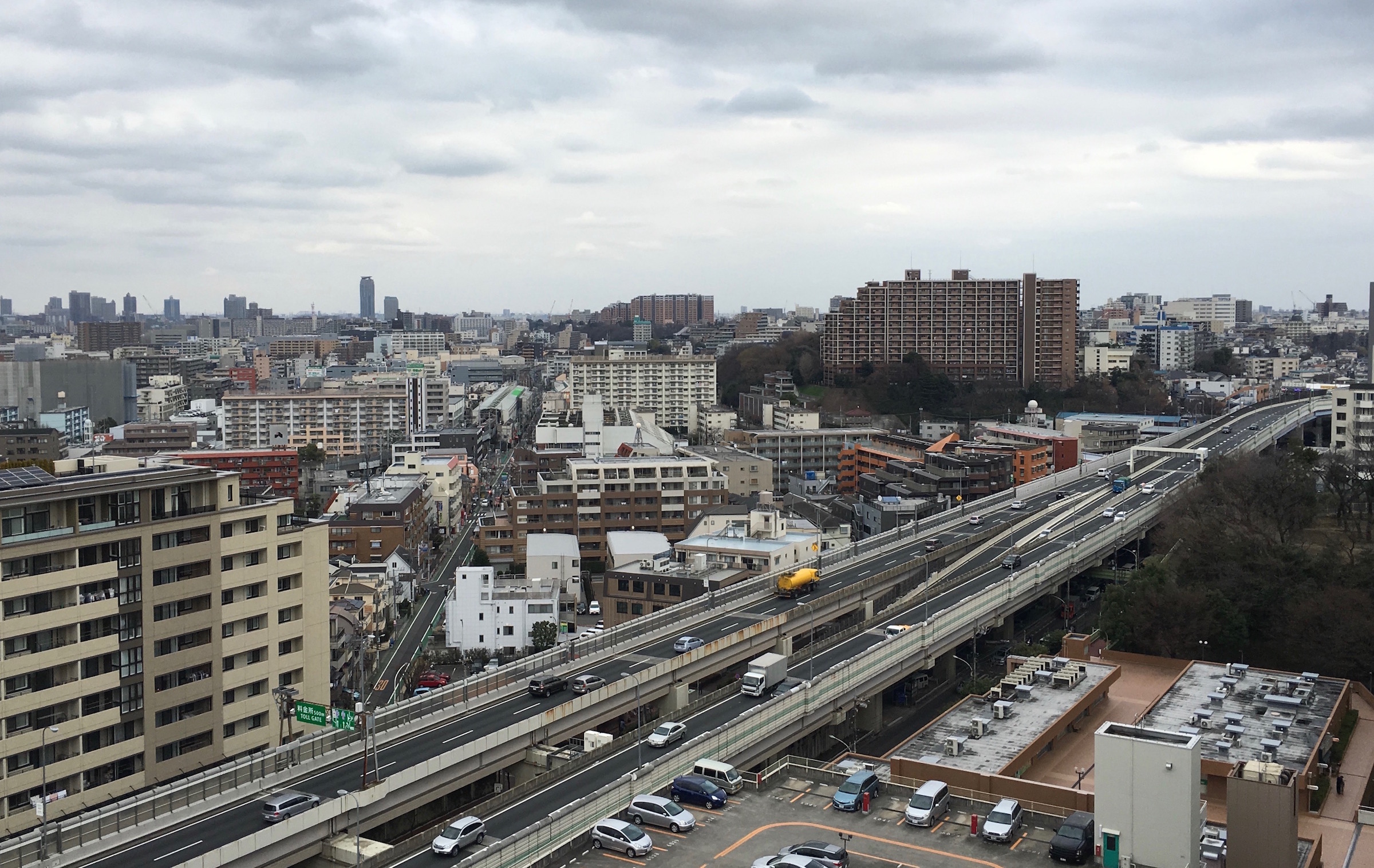As the sun goes down and the water features are turned off I apply bug spray to myself and the youth. In a slow procession we move from one park to another; from the running water and streams we head to the castle, dirt, and playgrounds of Asukayama koen. Our group gathers bikes, changes wet clothes for dry, buys snacks, orders pizza, and settles onto a picnic table for the evening. It is a Sunday in July in the summer of twenty twenty five and I am sure these are the good years.
The children in our group of three families range from two to six. We the parents are in our late thirties, early forties. Our mid forties. Most of our parents are still alive. Some of our grandparents are still alive. We are all healthy, all still able to run and to carry. Well, save for my broken arm, though on this evening it doesn’t stop me from pushing swings, spinning carousels, carrying children, and eventually climbing the monkey bars with them, gingerly in the dark.
As a person I am not always good at appreciating things. I am always considering improvements, or other topics. One of the best parts of parenting is the constant requirement to be present, to sit and watch on the playground, to help draw silly animals. It’s not automatic. There are often other things I feel I should be doing. That feeling is not the truth, and learning the difference has not been easy. Is not easy.
Occasionally, though, the good is so strong and so blindingly temporary that I am aware. As Bourdain said, “I’ve learned in real time to look at those things and realize”. I may not yet have learned, but I can be compelled. And so, on this July evening, as the light shifts and the forceful heat of a Tokyo summer day fades into the kind of beautiful dusk that feels automatic to the season but is in fact too rare, I look around. I watch the children, one biking and the rest running after. I watch the couples, new friends, telling each other stories of how they met. I watch other families in their own small gatherings, with their own children and friends. I watch the band, that plays for half an hour in public, an odd collection of all ages making music together. I watch the Shinkansen, the Kehin-Tohoku, the Toden-Arakawa, and the Shonan-Shinjuku lines from a pedestrian bridge as the children yell “train, train” and run from one side to another chasing the lights.
I am lucky, in these moments. The past few months have been hard, and injuries are never kind to the mind. Good then to have a few long summer evenings in the park with friends. Good to emerge dirty, exhausted, and satisfied.
On the tram home we say goodbye with the gladness of those grateful for the hours.
“That was the first time we got to let him run like that,” one of the parents will tell me later. “He was all scraped and dirty, and it felt good.”
“My daughter too,” I’ll say, and, “it really felt like summer.”
